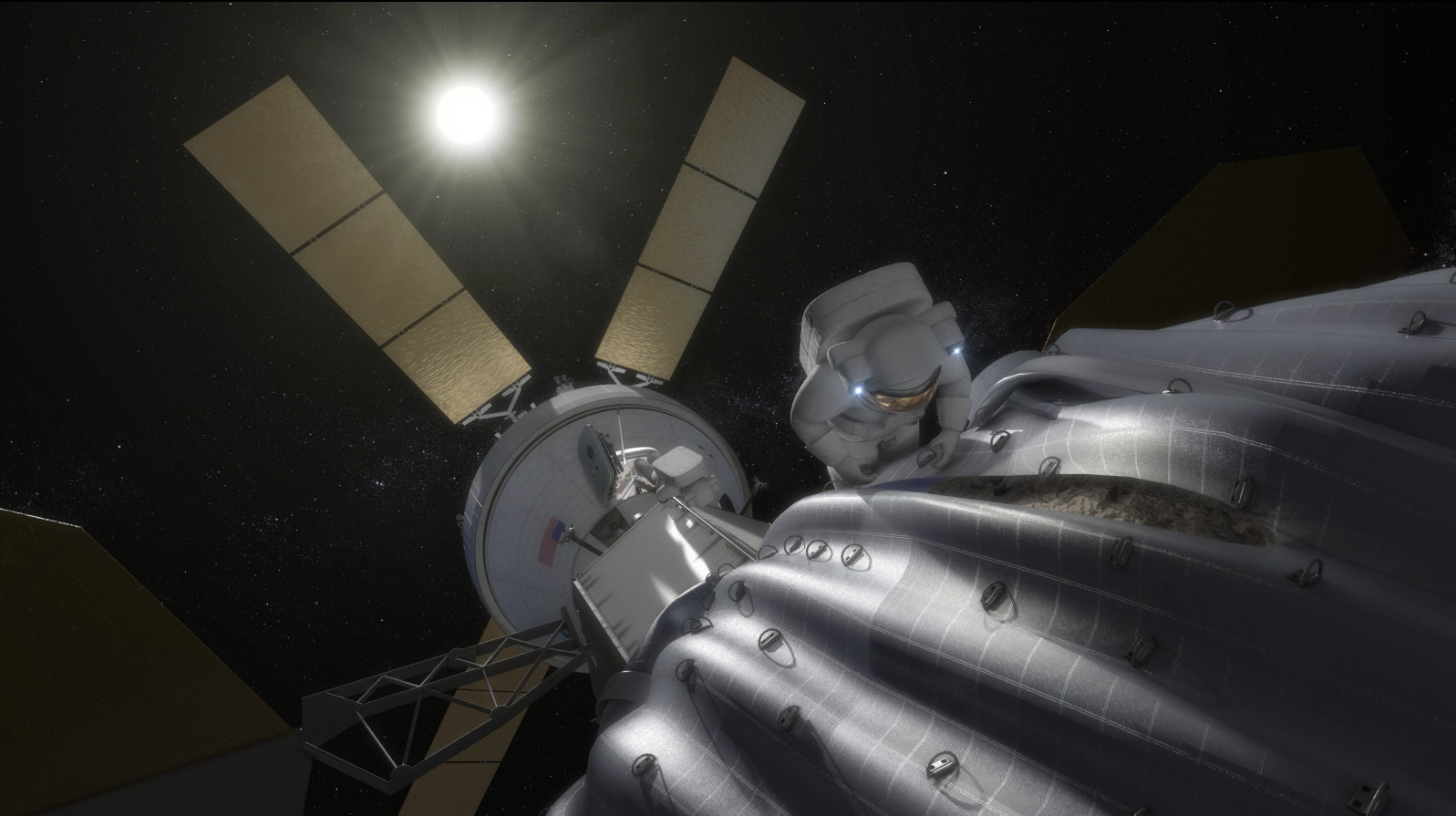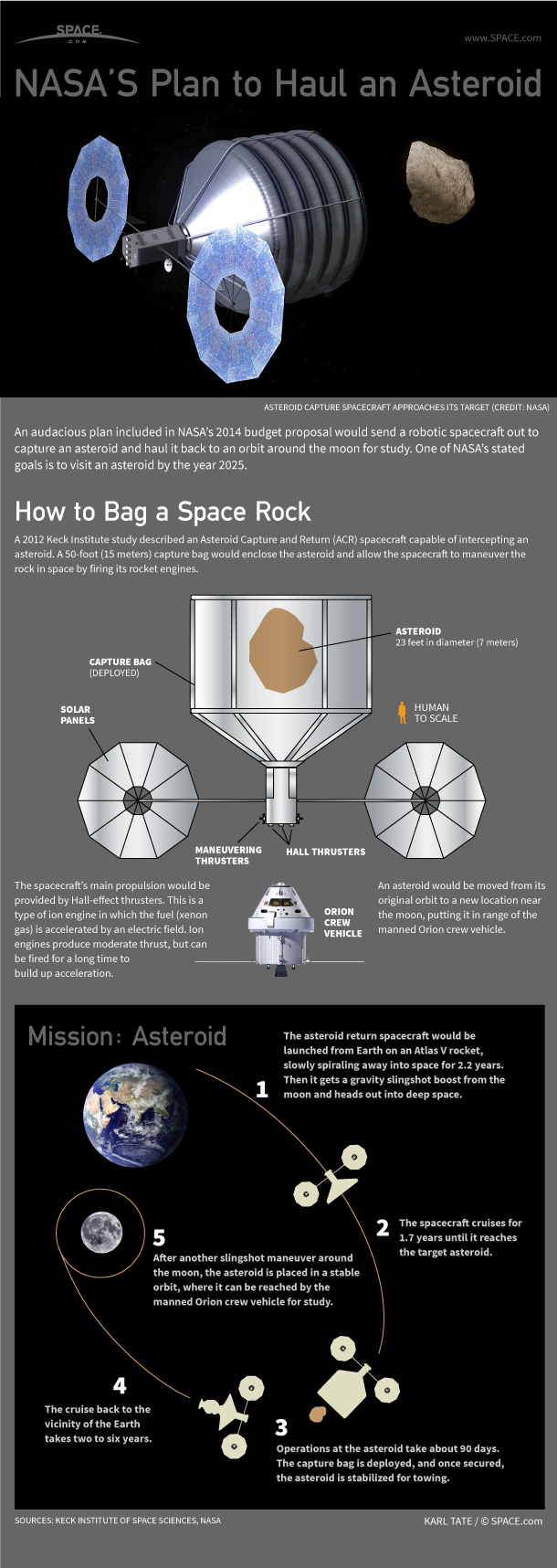
NASA's bold asteroid-capture mission is an expensive distraction that does little to advance the agency's overarching goal of getting humans to Mars, one prominent researcher argues.
For the past 18 months, NASA has been working on a plan to drag an entire near-Earth asteroid, or a boulder plucked from a large space rock, into lunar orbit using a robotic probe. The captured asteroid could then be visited by astronauts aboard the agency's Orion crew capsule, ideally by 2025 at the latest.
NASA officials say this "Asteroid Redirect Mission," or ARM, will help develop the technologies and know-how required to send astronauts to Mars, which the space agency hopes to accomplish by the mid-2030s. [NASA's Asteroid Capture Mission in Images]
But Richard Binzel, a professor of planetary science and aeronautics and astronautics at the Massachusetts Institute of Technology, begs to differ. ARM makes no sense, he says.

"The principal reason that ARM makes no sense is that it is a misstep off the path to Mars," Binzel told Space.com. "There's nothing about sending humans to Mars that requires us to capture an asteroid in a baggie. That's a multibillion-dollar expenditure that has nothing to do with getting humans to Mars."
Binzel lays out his reasoning in a commentary piece published online today (Oct. 29) in the journal Nature.
"Hardware and operations to capture, contain and redirect an asteroid are dead-end elements with no value for long-duration crewed space travel," he writes. "Conveying to the public that reaching Mars requires patient and diligent progression in capabilities is the honest alternative to distracting them with a one-off costly stunt."
Get the Space.com Newsletter
Breaking space news, the latest updates on rocket launches, skywatching events and more!
And Binzel has some ideas about how to achieve that progression in capabilities. Indeed, he wrote the new essay primarily to get those ideas out rather than to bash ARM, Binzel told Space.com.
NASA should scrap ARM, Binzel says, and establish a "Grand Challenge Mission" scheme that selects proposals via a competitive process, much like the agency's New Frontiers program, which sends robotic probes out to explore the solar system for less than $800 million apiece.
The budget should be similar to that of New Frontiers, he adds, meaning NASA, the White House and Congress would have to agree to commit about $200 million per year to the effort.
Binzel envisions three sequential asteroid missions in this proposed setup. The first would be a comprehensive survey of near-Earth asteroids, the vast majority of which whiz close to our planet undetected. Such a search would discover many objects that could serve as "stepping stones" to Mars, he says — asteroids that humanity could visit in their native orbits, exploring increasingly farther afield from one mission to the next.
"Asteroid retrieval gets you one object; a survey will get you thousands, at a fraction of the cost," Binzel told Space.com. "Knowing that those objects are there is like a gateway toward human exploration and eventual commercialization."

In Binzel's vision, the second mission would test asteroid-deflection techology, while the third would try out ways to robotically extract water and other resources from space rocks.
But everything starts with the comprehensive near-Earth asteroid survey, which many researchers have been advocating for decades as a way to protect the planet. Binzel hopes his essay can help it get off the ground at long last, by getting people in NASA's human-spaceflight directorate more solidly behind the idea and tipping the balance.
"My goal here is to bring awareness of how a survey will benefit human spaceflight," Binzel said. "My point is that a survey should be of great interest to the human exploration side of NASA because it can deliver thousands of accessible destinations that are on the path to Mars."
Follow Mike Wall on Twitter @michaeldwall and Google+. Follow us @Spacedotcom, Facebook or Google+. Originally published on Space.com.
Join our Space Forums to keep talking space on the latest missions, night sky and more! And if you have a news tip, correction or comment, let us know at: community@space.com.

Michael Wall is a Senior Space Writer with Space.com and joined the team in 2010. He primarily covers exoplanets, spaceflight and military space, but has been known to dabble in the space art beat. His book about the search for alien life, "Out There," was published on Nov. 13, 2018. Before becoming a science writer, Michael worked as a herpetologist and wildlife biologist. He has a Ph.D. in evolutionary biology from the University of Sydney, Australia, a bachelor's degree from the University of Arizona, and a graduate certificate in science writing from the University of California, Santa Cruz. To find out what his latest project is, you can follow Michael on Twitter.









